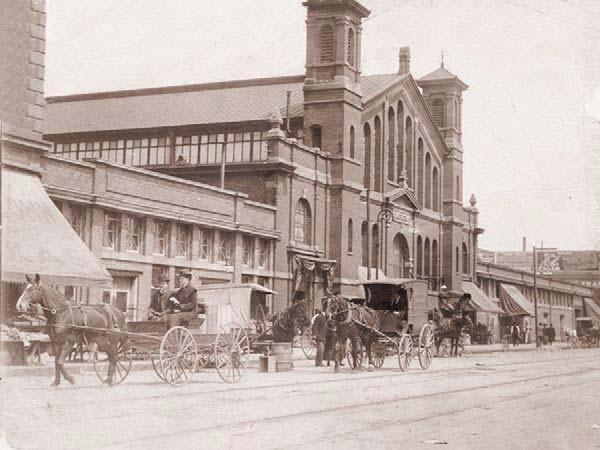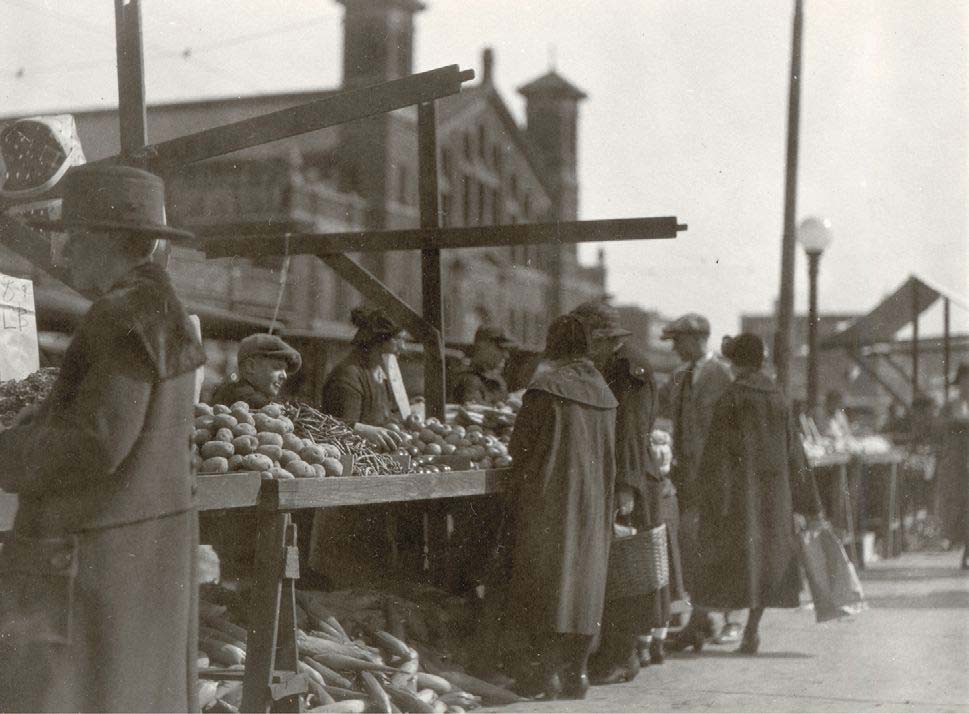Indianapolis City Market: A Continuing Tradition
Historic Landmark Offers Unique Shopping and Eateries
Photography courtesy of Indianapolis City Market

City Market ,1908
As the state of Indiana commemorates its bicentennial, one landmark in the capital city continues to be enjoyed and celebrated by both locals and visitors. Housed in a stately European-style building, the Indianapolis City Market has been a constant during years of changes in the metropolitan center. Today, with the resurgence of residential living in the downtown area, it continues to be a colorful and vibrant destination for entertainment and shopping.
Indianapolis has the distinction of being a planned city and the original blueprint insured there was space for a public market. When Alexander Ralston, who also assisted in designing Washington, DC, divided the land into a grid in 1821, he designated the south side of plat 43 as the location for the City Market. For the first years of its existence, it was primarily agrarian. Open-sided stalls provided shelter to merchants who sold hay, grain, wood and tools.
It wasn’t until 1886 that the existing building was designed and built. Designed by German-born architect Diedrich A. Bohlen, it replaced the outdoor booths that had occupied the property since the 1830s. The brick structure featured twin-flanking towers and rounded archways that still exist today. Around the same time, Tomlinson Hall was erected on the spot where the west wing is today. Also designed by Bohlen, the exposition center complemented the City Market both in appearance and utility. In its prime, Tomlinson Hall was host to presidential rallies, John Philip Sousa band concerts and one of the first basketball games in the Midwest. The hall had retail space on the street level, and while the City Market sold produce, the Tomlinson vendors peddled meat.
 City Market ,1923 - Photo courtesy of Indiana Historical Society, (P0173).
City Market ,1923 - Photo courtesy of Indiana Historical Society, (P0173).
Immediately following World War II, Indianapolis was home to busy families with smaller refrigerators than the ones of today. Many housewives visited the City Market several times a week to purchase perishables. According to Stevi Stoesz, executive director, activity in the market peaked in the 1950s when it boasted 246 stalls, 21 retail stores and three restaurants.
“Today, a scenario like that would be impossible,” Stoesz said. “The situation back then predated today’s Board of Health regulations for hand sinks and water heaters necessary for food services.”
However, by the end of the decade, families began to move out of the city and into the suburbs. In 1958, Tomlinson Hall was razed after succumbing to a fire, and downtown Indianapolis was no longer a prime location for events held after office hours.
By the 1970s, the City Market had become what Stoesz describes as a “lunch counter.” Although it still had some grocery-type stands, “It had to make a model shift in order to stay relevant to the demand of the time,” Stoesz said. From 1972 to 1977, repairs were made to the structure as part of an overall program to revitalize the downtown area. The mezzanine was added, as well as the east and west wings. During this time of renewed interest in the City Market, it became listed on the National Register of Historic Places.
In recent years, two other important renovations have taken place. Structural overhauls such as new pipes, lighting and floors were the focus of a 2007–08 restoration. The 2010– 11 cosmetic makeover, which added color and enhancements to the building’s architectural features, occurred just in time for the 2012 Super Bowl held in Indianapolis. The market was chosen by the hosting committee as a recommended venue for holding events.
Today, the City Market is having a renaissance as diverse customers such as Millennials, office workers, empty nesters and hipsters frequent the market from its opening at 7am on weekdays, 8am on Saturdays, to its closing at 9pm. Patrons are drawn to stalls and eateries that off er artisan products, one-of-a-kind gifts and authentic ethnic food. Named after the hall that once stood nearby, on the second floor is the Tomlinson Tap Room with its rotating selection of Indiana craft beers. It offers a great place to meet after work or before the game. Every Wednesday from May through October, The Original Farmers’ Market featuring vendors selling in-season produce, local meats, cheeses and other unique items is held outside from 9:30am to 1:30pm, rain or shine. The Bicentennial Bazaar, an indoor farmers’ market, is held on Saturday from 9:30am to 12:30pm until March 26.
“It’s an exciting time for the Indianapolis City Market,” declared Stoesz. “Patrons not only come to attend our sponsored events such as tours of the Tomlinson Hall catacombs, but can also shop from merchants who can tell them exactly how an item was grown or prepared.”
For more information and a complete calendar of events, visit IndyCM.com.




